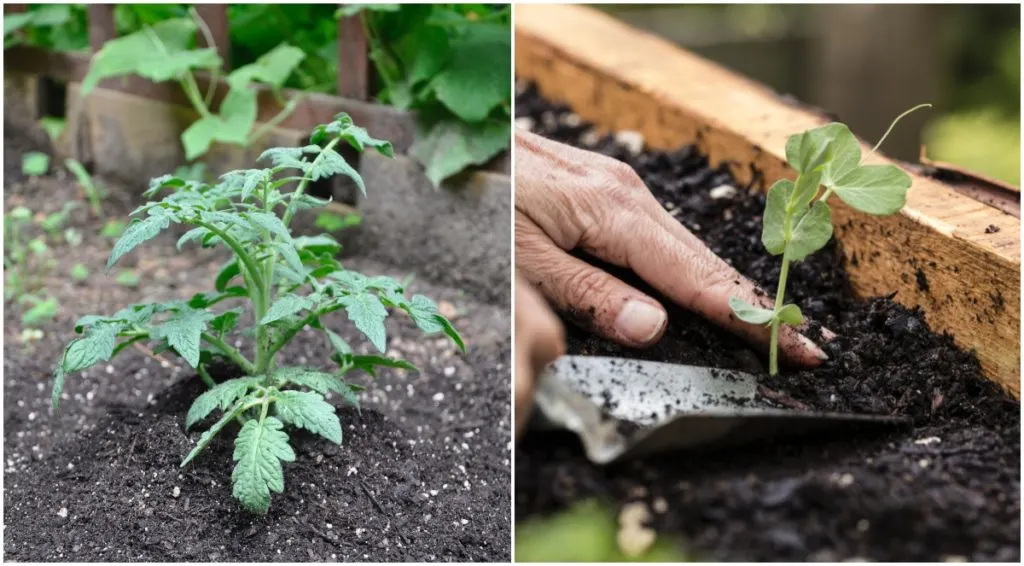
Forget all of the other lists you’ve seen on the internet that tell you what to grow in a raised bed; this is the only one you need.
Raised beds solve many problems for gardeners everywhere, offering the convenience of container growing on a larger scale. If your soil is less than stellar, raised beds save the day. Limited space? You can maximize it with a well-placed raised bed or two.
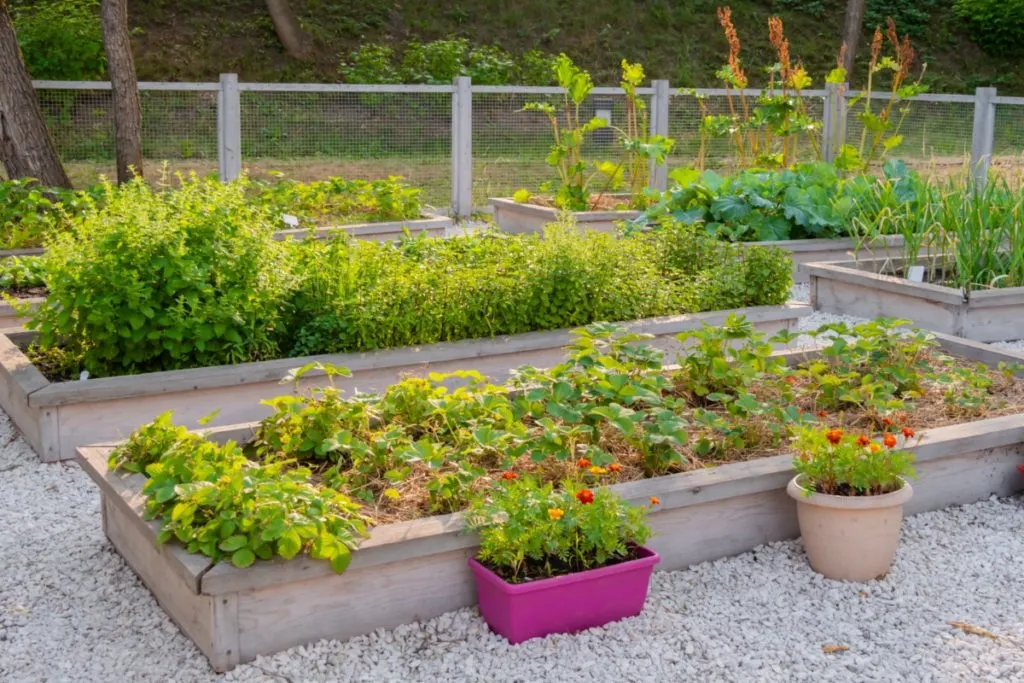
And let’s not forget that they can be made from many materials.
Related Reading: 12 DIY Raised Bed Kits You Can Buy On Amazon
Gardening on a dime? Try a few large cardboard boxes surrounded by chicken wire. If you want to go all out, there are building plans that incorporate raised beds right into your patio. We even had one reader who used old bathtubs for raised beds. Genius!
But it’s important to remember that just because raised beds are trendy and solve certain gardening issues, they aren’t necessary for everyone.
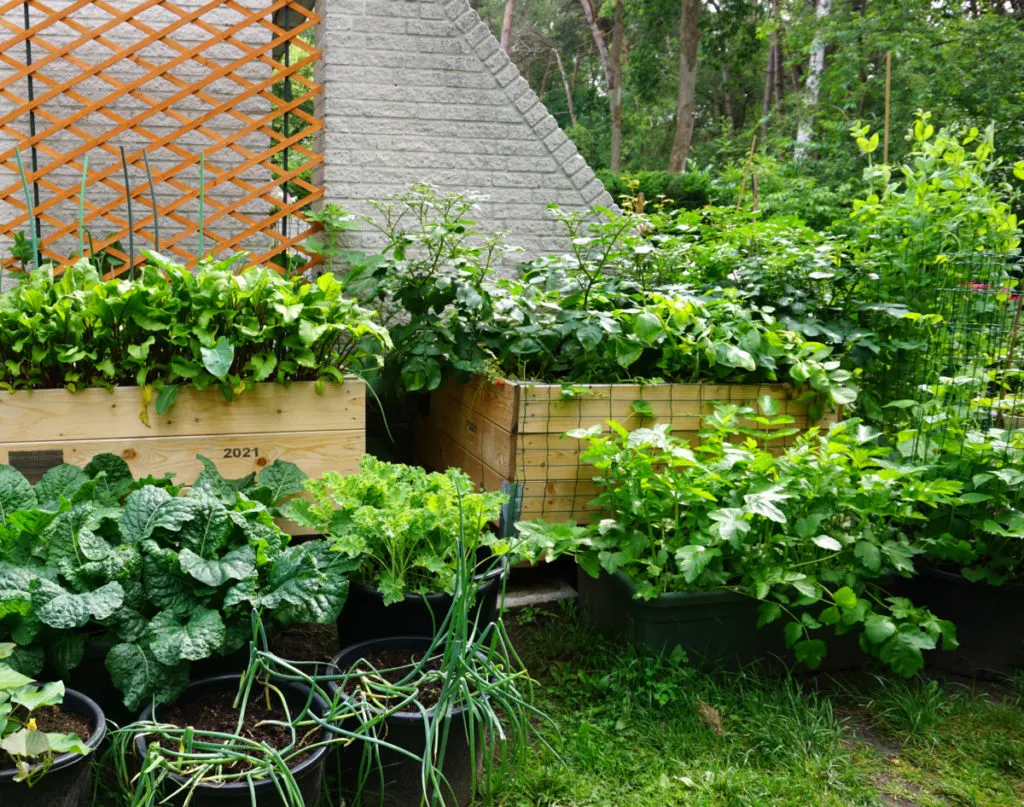
Raised beds have become so popular that some new gardeners assume that’s the only way to garden. Before you head to the lumber yard to build those expensive wooden raised beds, take a good look at whether you even need them.
6 Reasons Why You Shouldn’t Start A Raised Bed Garden
If you do end up going the raised bed route, and you’ve figured out what you’re going to use to make your raised bed, the obvious next question is,
“What can I grow in a raised bed?”
The simple answer is this – whatever you want.
If you want to grow a 700lb pumpkin in your raised bed, go for it. Just know that might be the only thing you grow. And I hope you’ve got a sturdy bed.
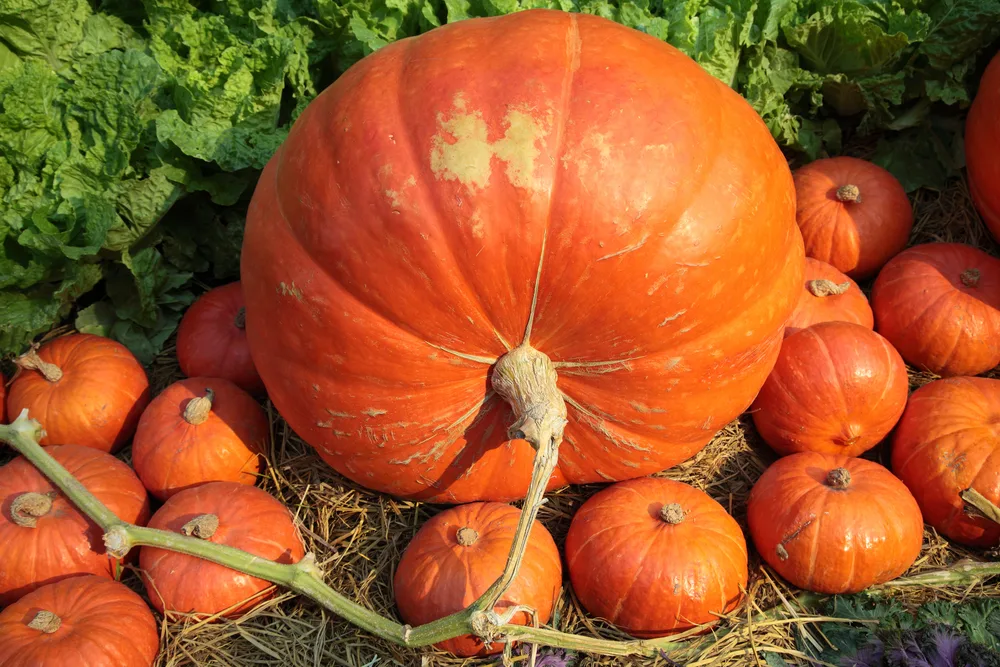
Like most things in life, though, just because you can do something doesn’t always mean you should—the same stands for gardening in raised beds.
While there isn’t really anything you can’t grow, some vegetables are better suited to this type of gardening. And naturally, there are some plants that would do better in a different setup.
The one thing you need to keep in mind when you don’t find the vegetable you want to grow on this list, or the vegetable you want to grow is on the “not suited for raised beds” portion of the list is this – you can 100% go ahead and grow it anyway.
The point of this list is to help you maximize your raised bed space with the best plants suited to this type of garden space.
At the end of the day, it’s all about what will work best for you and your growing needs.
Best Vegetables to Grow In a Raised Bed
1. Root Vegetables – Carrots, Beets, and Radishes, Oh My!
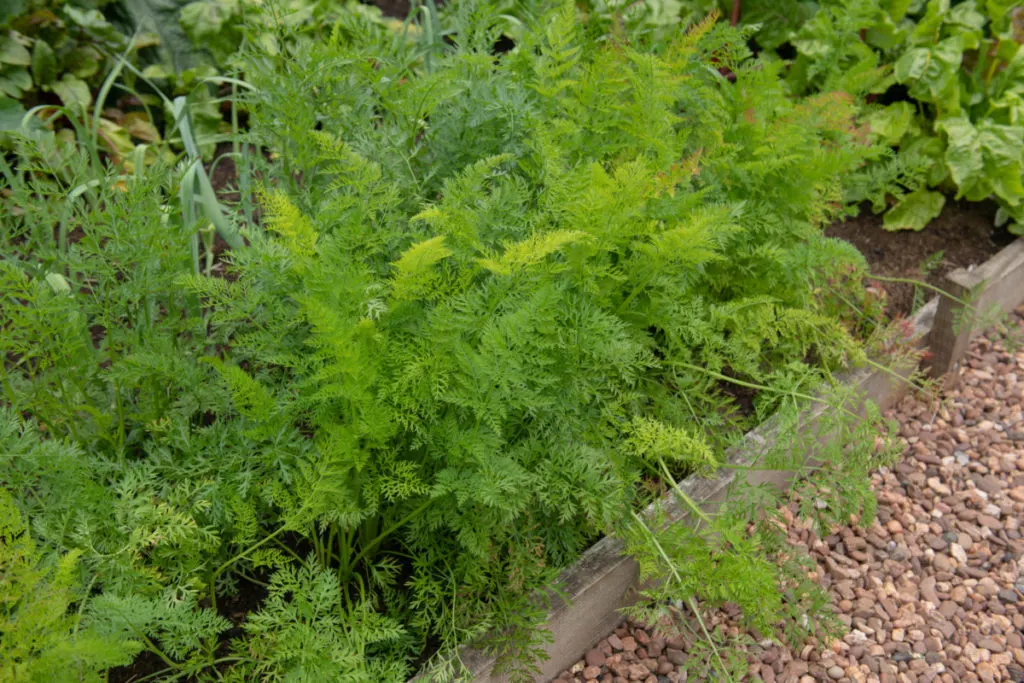
Root vegetables are a great choice for raised beds. As anyone who has struggled to grow carrots to any decent size will tell you, root vegetables are notoriously finicky. Radishes will remain spindly if they feel even the teensiest bit cramped.
Stunted by rocks or overly compact soil, root crops can prove difficult to grow directly in the ground.
Because most raised beds use bagged soil mix, or at the very least a mix of compost and good soil that’s been screened, this becomes a non-issue. There are no rocks to contend with, no clay, no ground that’s as hard as cement – just good, quality soil.
Related Reading: How To Fill A Raised Bed With Quality Soil For Cheap
The only caveat to this is carrots; if your raised beds are relatively shallow, say around 8” deep, you’ll want to choose short and compact varieties, like Danvers or Oxheart. However, if you have raised beds that are 12” or deeper the sky is the limit!
Radishes, turnips, rutabagas, beets and carrots all do exceptionally well in raised beds. (Give these Kyoto red carrots a try; they’re my personal favorite! The cooler the temps, the redder they get.)
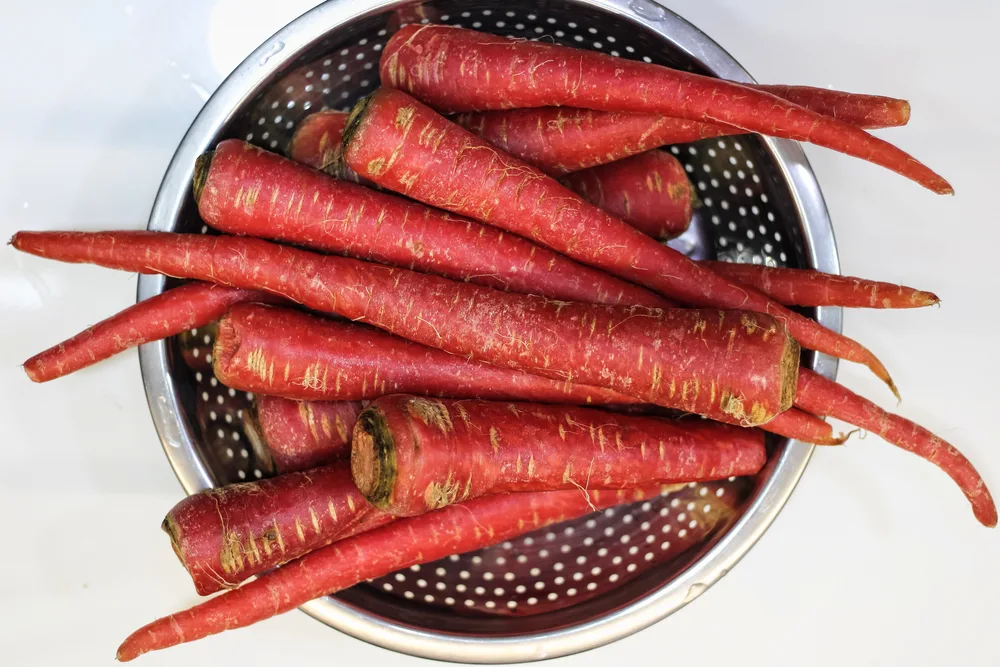
2. Lettuce & Other Leafy Greens
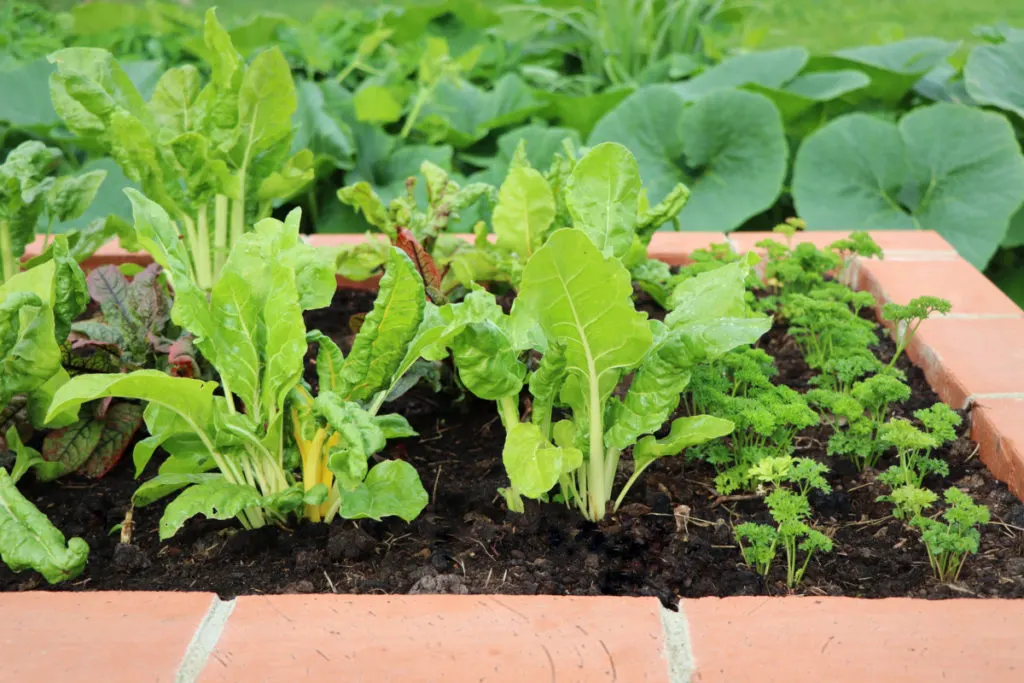
Lettuces, spinach, Swiss chard and kale are all great raised bed crops. Nearly all of these greens maintain a small footprint in your raised beds, meaning you can get a lot of them out of a small space.
And as for the cooler weather types, once they have finished, you can pull them out and plant another crop in their space to get the most growing bang for your buck out of your garden.
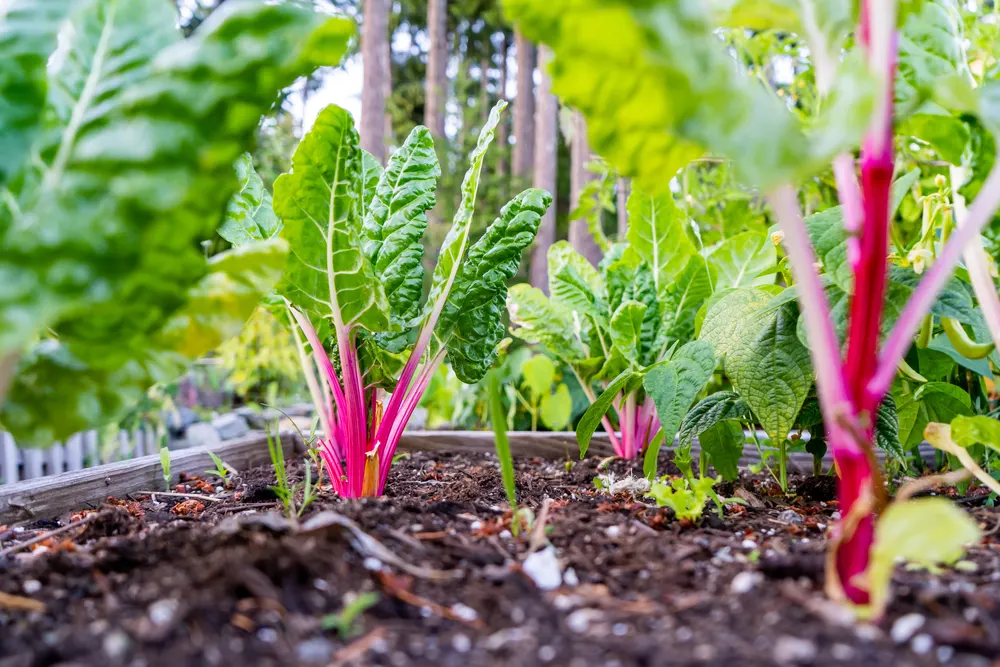
Don’t forget bok choy, mustards and other tasty Asian greens. They are all packed full of nutrients, easy to grow and will thrive in your raised beds.
3. Cucumbers
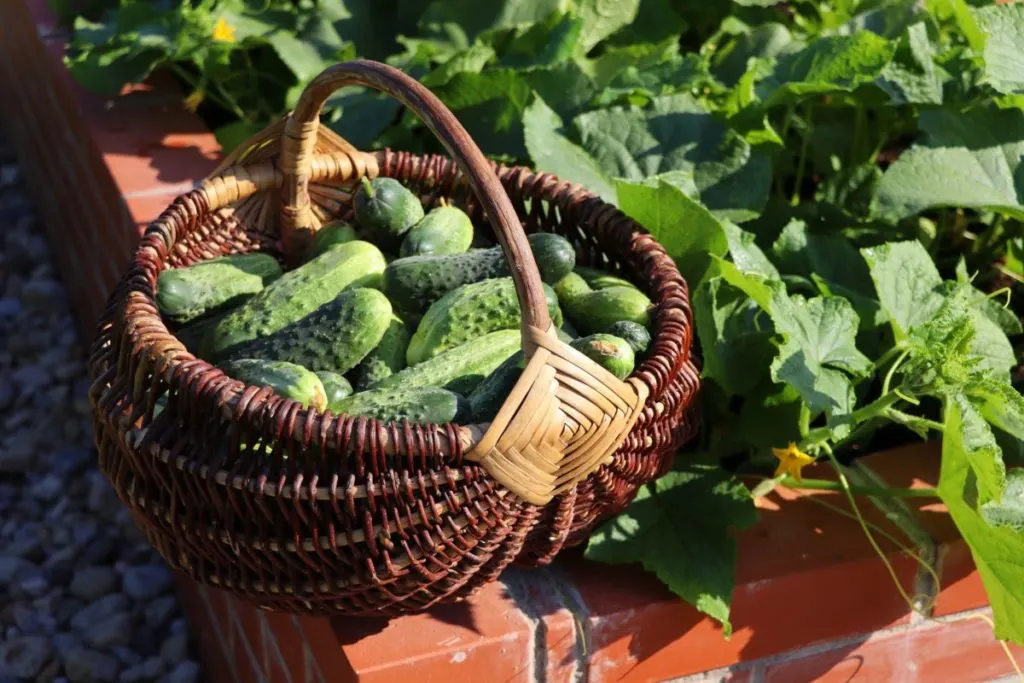
Cucumbers come in either bush or vine types. Believe it or not, the vining varieties are absolutely perfect in raised beds.
If you provide a trellis structure, which can be as fancy as plumbing pipe attached to the side of your raised bed or as simple as a few branches stuck in the soil and some twine, your cucumbers will happily climb, taking up little to no room in your bed.
Related Reading: 12 Cucumber Trellis & Support Ideas
Plant the cucumbers relatively close to the side where the trellis is and train them up the support. Not only does this method take up less room when grown vertically, but it also makes your cucumbers easier to find.
4. Onions, Garlic and Leeks
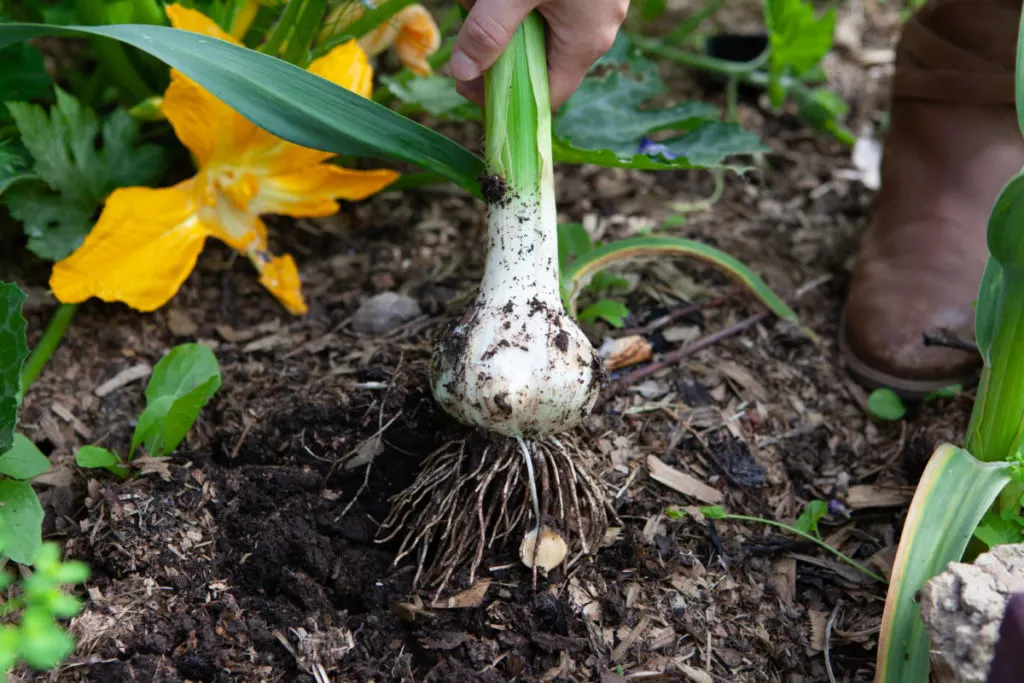
Another staple in every kitchen, and compact to boot, members of the allium family are perfect tenants in a raised bed.
When it comes to growing onions, garlic and leeks in your raised beds, I want you to think outside the box. I know that’s asking a lot, considering we’re talking about growing veggies in large boxes. But so often, we get it into our heads that crops have to be grown together in a neat row or square.
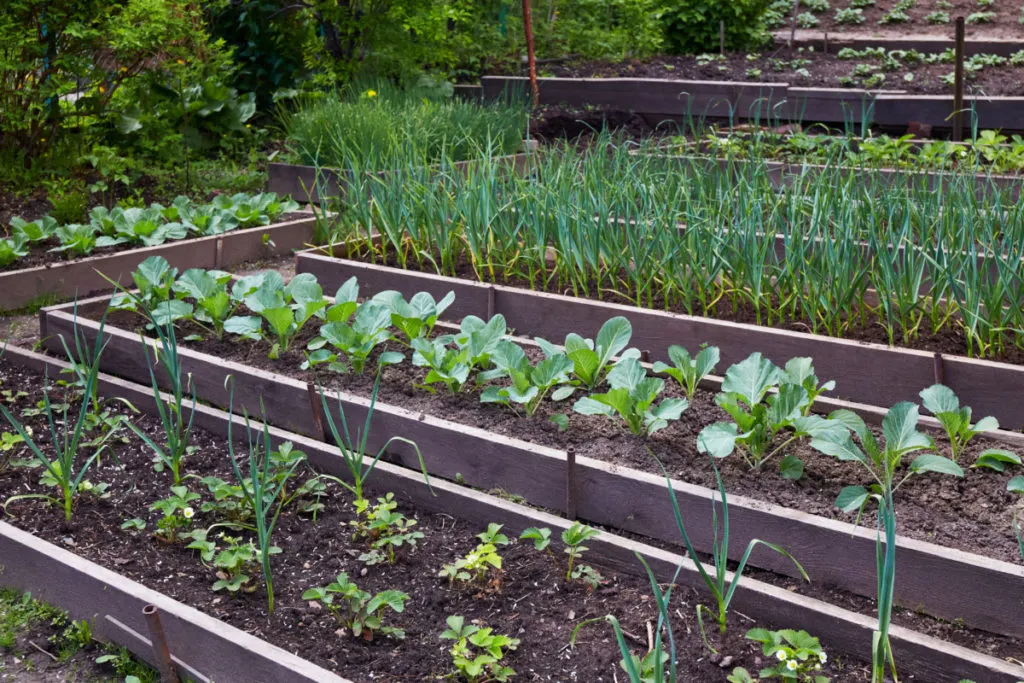
With these three veggies, their tiny footprint means you can sneak them in wherever there is room. Instead of having a dedicated spot in your raised bed for these plants, try tucking your bulbs in wherever you find a few spare inches in your beds.
Just remember that onions don’t like to be planted next to beans, peas, asparagus or sage.
5. Peas
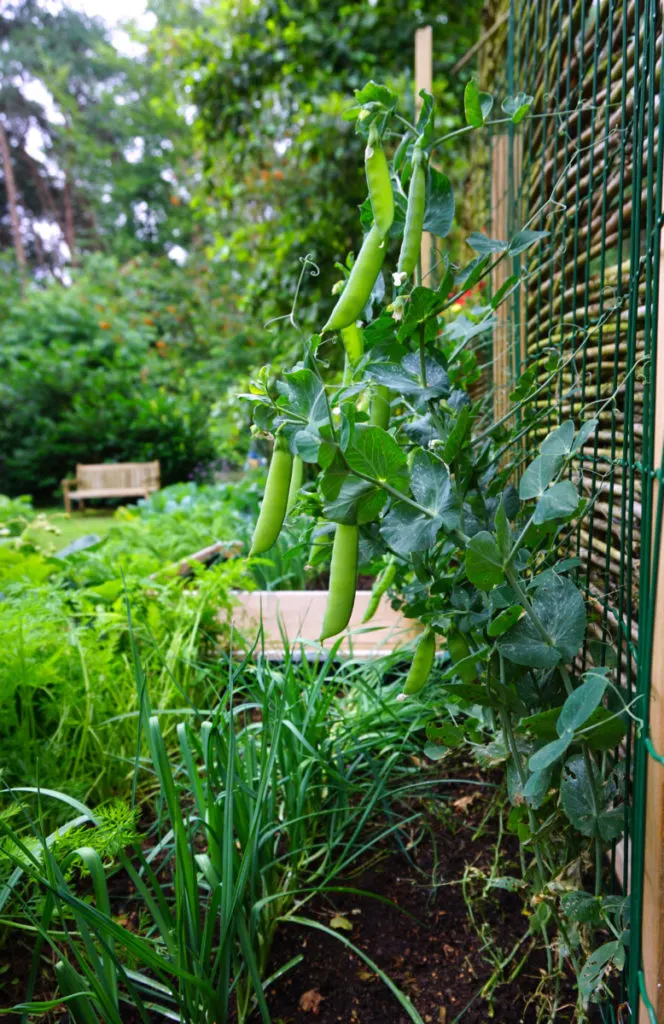
Remember that trellis we made for our cucumbers? Make another one, and you’ve got the perfect place to grow a patch of delicious, bright green peas.
Most of the actual space that peas use in a garden can be trained to grow up, leaving you plenty of space to grow the rest of your veggies. Grow a crop in the spring and another in the fall when the temperatures cool down again.
6. Beans
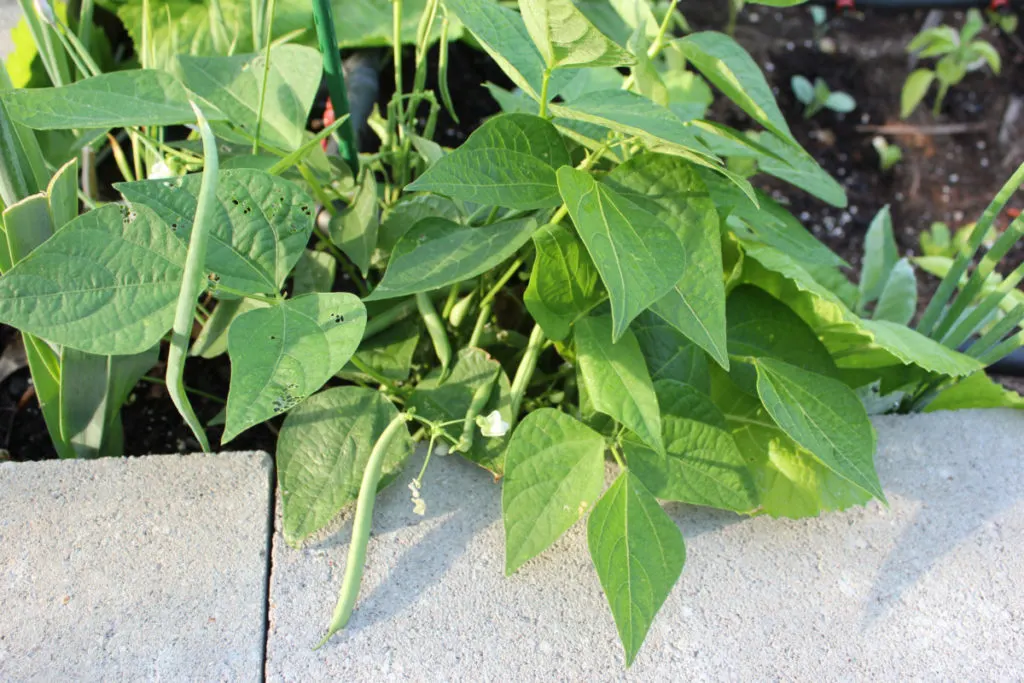
Both vining and bush beans are great to grow in raised beds. Although, if you’re growing climbing beans you’ll need to give them something to climb.
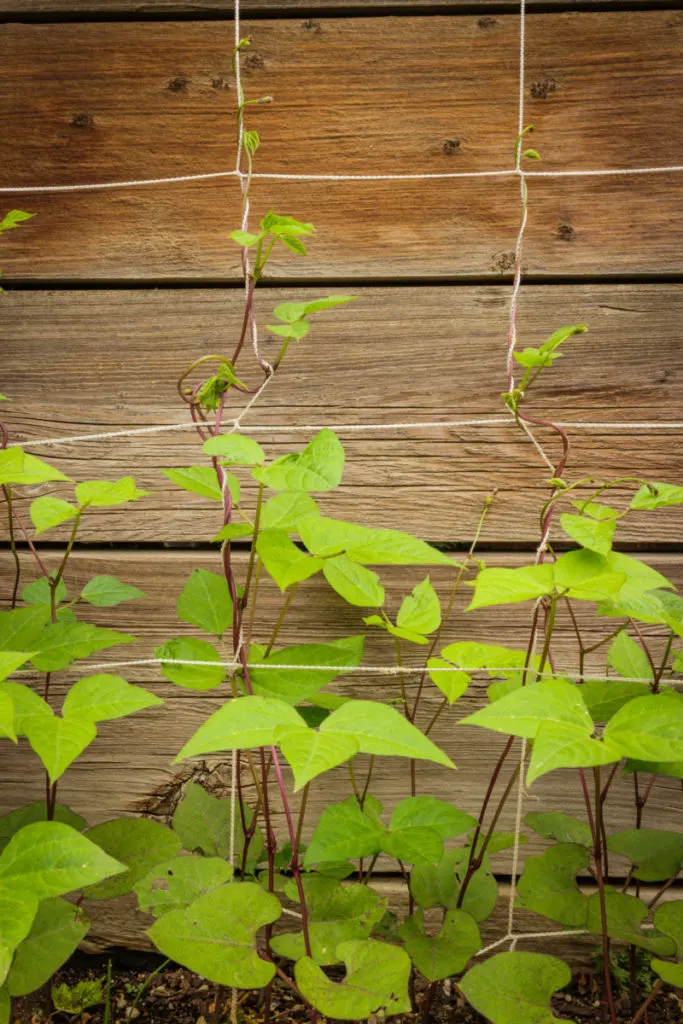
Unlike their vining cousins, which can easily get out of hand, bush beans stay relatively compact, making them a great addition to your raised beds.
And don’t forget to stagger planting them so you can enjoy a steady stream of beans rather than a huge crop all at once.
You can easily poke a bean in the ground when one crop is done, like lettuce, or after you’ve pulled up your radishes. Remember, we don’t always have to have neat, orderly rows and boxes. Get creative and maximize your space.
7. Eggplant and Peppers
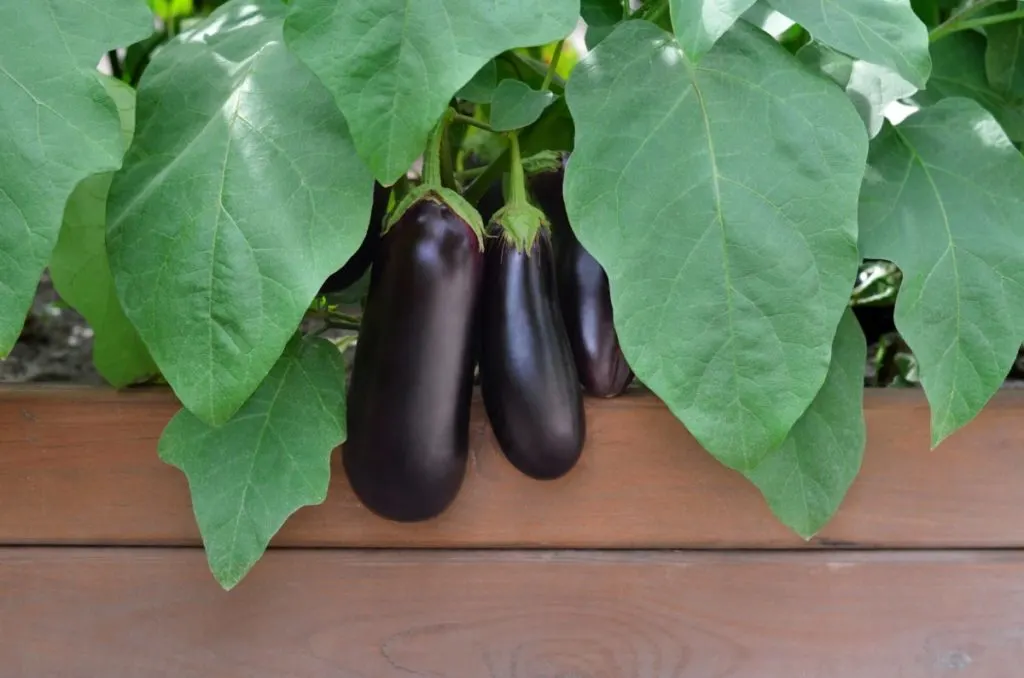
These two members of the nightshade family are perfect additions to your raised beds. While their compact size is the obvious reason, there is another reason that eggplant and peppers do well in raised beds.
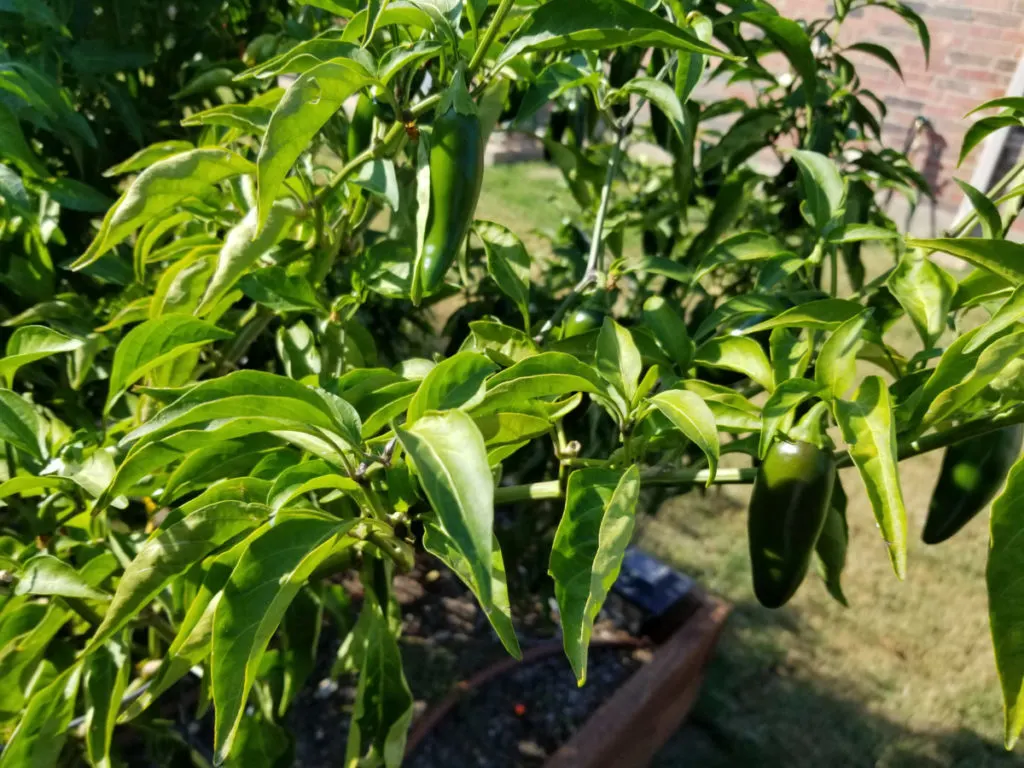
Both peppers and eggplant prefer warmer soil temps before they settle in and start producing. In general, the soil in your raised beds will warm up quicker than the ground temperature, meaning you’ll be enjoying baba ghanoush and pepper slaw before your neighbors.
Don’t brag too loudly.
3 Veggies You Maybe Shouldn’t Grow in Your Raised Beds
1. Tomatoes
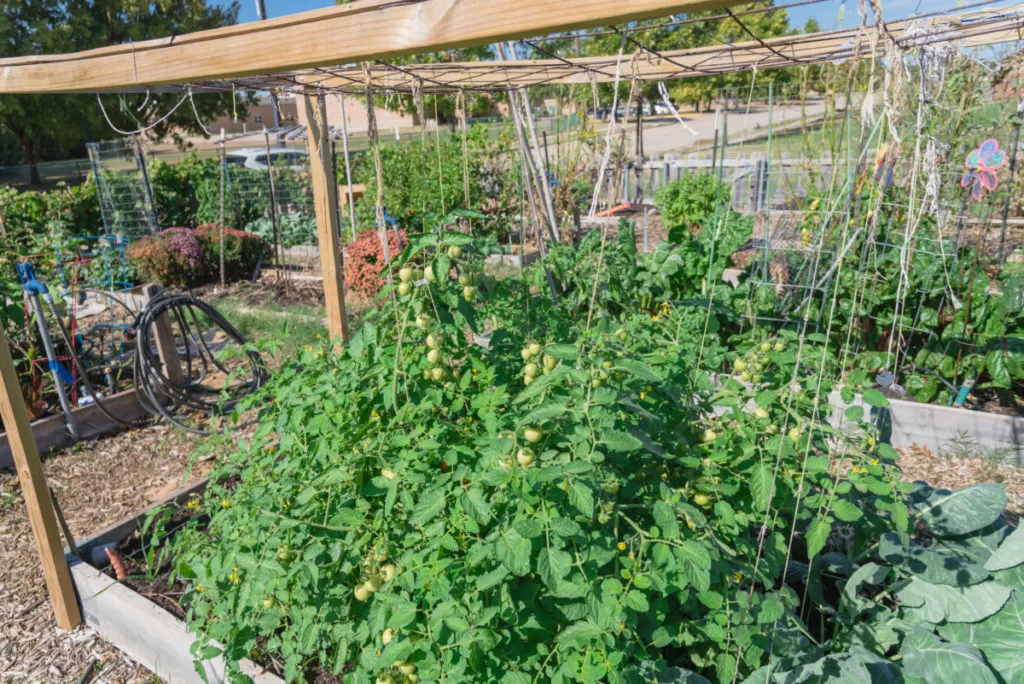
Yup, I said it. Right out of the gate, she’s stirring the pot.
Now, I know there are dozens of other lists on the internet proclaiming that tomatoes are perfect for raised beds. And I’ll probably get tarred and feathered by all the good folks out there who grow tomatoes in their raised beds. But remember what I said at the beginning – just because you can do something doesn’t mean you should.
Hear me out.
Tomatoes, be they determinate or indeterminate, take up considerable room. And that’s if you stay on top of them and prune them weekly, which, let’s face it, most of us don’t do. Even “smaller” varieties, like cherry tomatoes, can grow several feet tall and wide.
When it comes to raised beds, space comes at a premium, and tomatoes take up a lot of it.
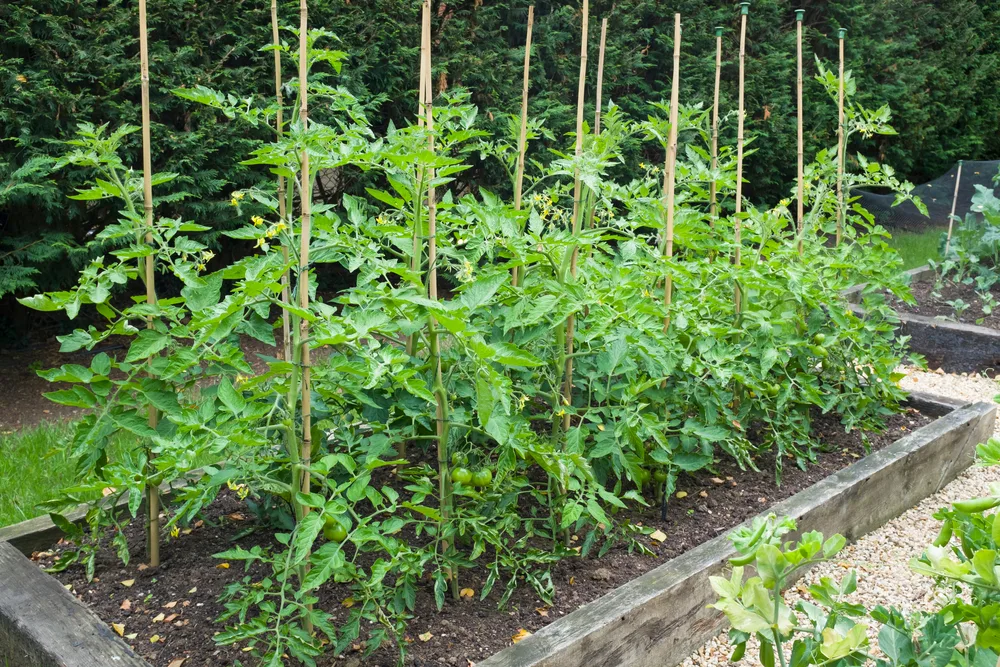
Your average tomato plant pruned a couple of times per season can easily take up a hefty 3’x3’ footprint. Even a compact variety that’s pruned regularly still has a footprint of around four square feet.
Consider what else, and how much of it, you could grow in the considerable chunk of space taken up by one lone tomato plant, and suddenly growing tomatoes in your precious raised bed real estate isn’t so appealing.
But Tracey, I love tomatoes! I grow tomatoes in my raised bed every single year; you’re crazy!
Yes, I love tomatoes too. And yeah, I might be a bit crazy.
I’m not saying you should never grow tomatoes in a raised bed. I am suggesting that space might be best used for something else. Especially when tomatoes are easily grown in things like high-quality cloth grow bags or food-grade 5-gallon buckets. You can even hang them upside down if space is super tight.
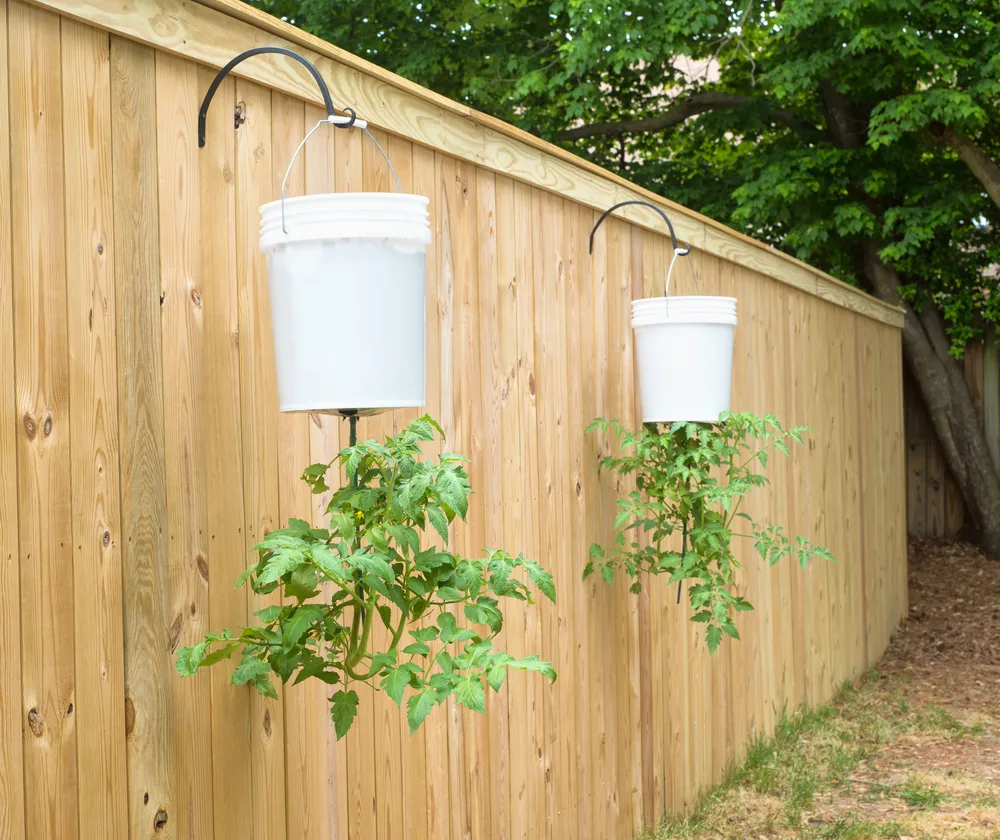
Save your raised beds for more compact veggies and grow a couple of tomato plants on the porch instead.
2. Zucchini & Other Sprawling Squash
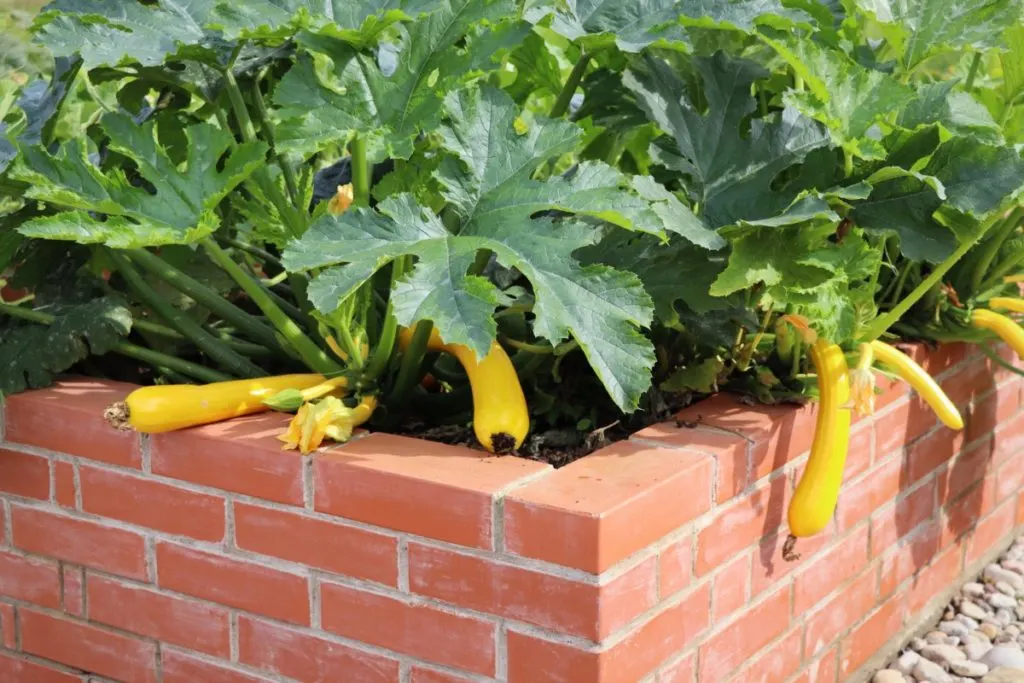
While zucchini and other squash will certainly grow in raised beds and do well, they take up considerable room and can easily take over your raised bed.
Before you know it, your radishes and onions have been completely shaded out by giant squash leaves.
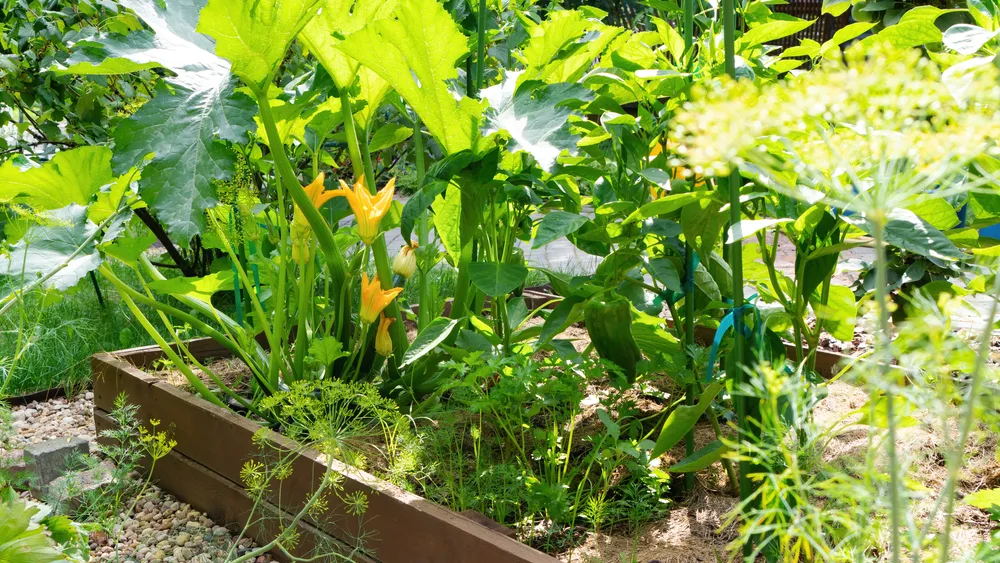
Consider growing squash in containers or a 5-gallon bucket. Place the bucket in a spot where the leaves can spread out a bit.
Or if poor soil is the reason you’re growing in raised beds, and space isn’t an issue, toss a shovel-full or two of compost right on top of the ground. There’s no digging necessary. Plant your squash seeds or transplants in the compost and cover the whole thing in a bit of straw to keep the compost from washing away.
You’ll be amazed at how well they do with just a little bit of growing medium.
3. Potatoes
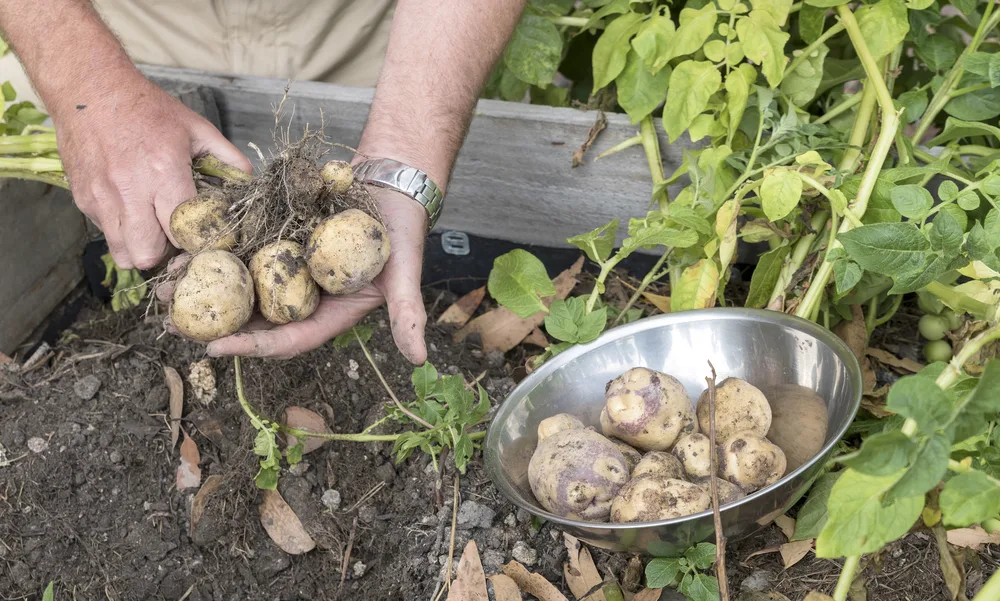
Again, for the amount of room they take up, there are better ways to grow spuds. And if you have raised beds that are particularly shallow, then potatoes won’t do well.
Grow bags or five gallon buckets are perfect for potatoes; I can move them around as the sun angle changes over the growing season. And the best part is when they’re ready to harvest, there’s no digging. You simply dump out the bag, soil and all, and pick out your beautiful spuds.
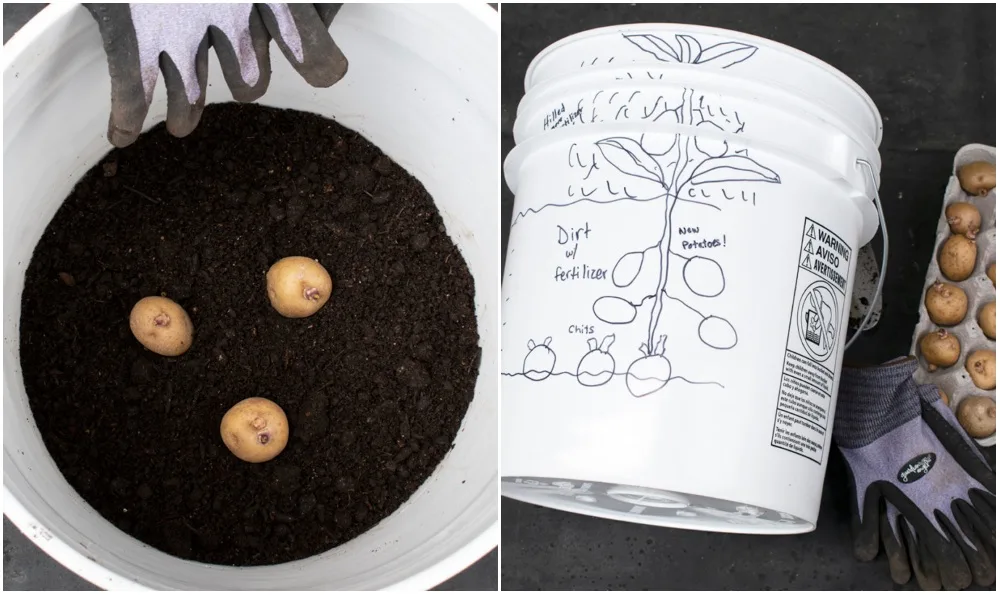
Related Reading: How To Grow Potatoes In a 5 Gallon Bucket
4. That 700lb Pumpkin I Mentioned
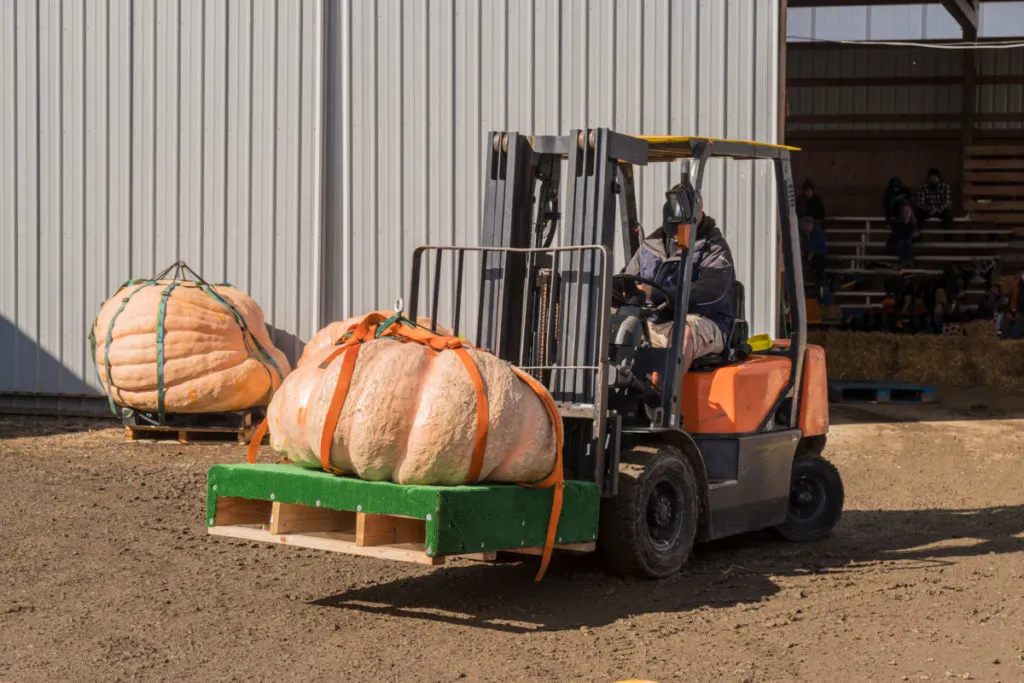
Yeah, probably not the best use of a raised bed garden.
As we wrap this up, I’d like to remind you of what I said at the very start. You can grow pretty much anything in raised beds. In the end, it’s up to you to decide what’s going to work best for your gardening needs.
After all of this, you may be wondering, “Tracey, what do you grow in your raised beds?” Well, folks, our own Cheryl Magyar converted me to no-dig gardening in 2021, and I haven’t looked back.
I still use grow bags on my balcony for herbs and flowers, but no-dig gardening caters to the lazy gardener in me as well as my love of all things fungi-related.
Be careful; you might never use a raised bed again if you click the link below.
6 Reasons To Start A No Dig Garden + How To Get Started
For more raised bed reading, don’t forget to check out these helpful articles:
10 Reasons To Start A Raised Bed Vegetable Garden
14 Common Raised Bed Mistakes You Must Avoid
45 Raised Bed Ideas For Your Garden
How To Fill A Raised Bed With Healthy Soil (& Save Money!)
7 Productive Things To Do With An Empty Raised Bed In Fall & Winter

Get the famous Rural Sprout newsletter delivered to your inbox.
Including Sunday ramblings from our editor, Tracey, as well as “What’s Up Wednesday” our roundup of what’s in season and new article updates and alerts.

